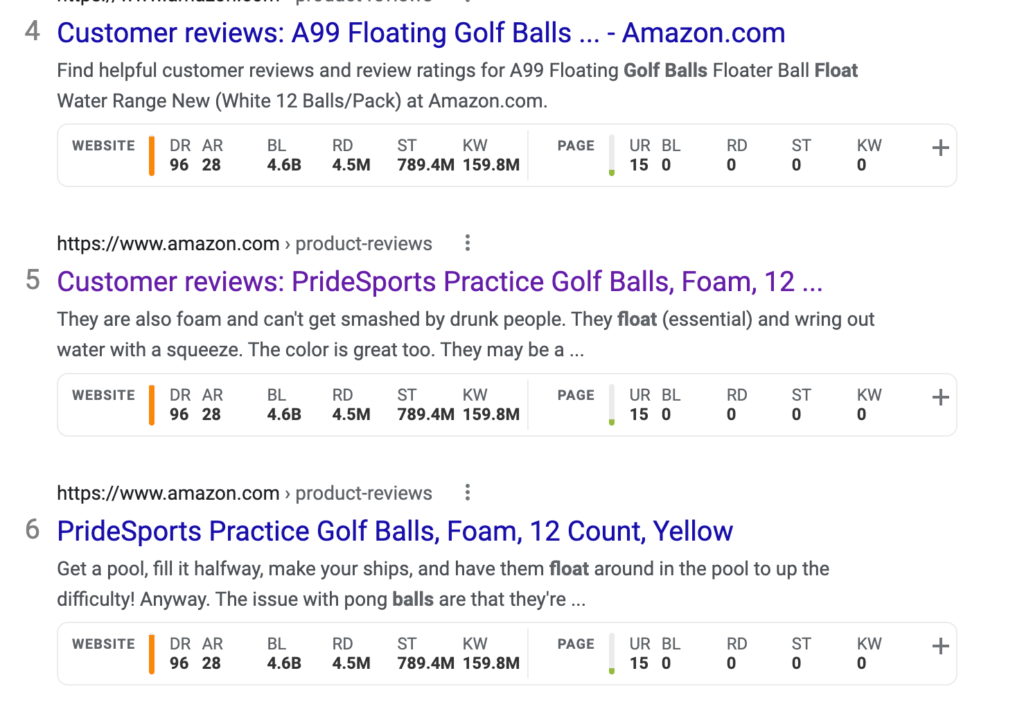
I love Amazon, because like most people, the convenience for the breadth of products is simply hard to beat. Beyond that, popularity means more users, and more users means more circumstances, scenarios, and examples of products being used in what might be unique situations.
And with that, comes user-generated content in the form of both reviews and questions and answers. While the latter will be discussed another time, today we want to help you harness the power of the real-life experiences people lived with the product you’re considering.
Two Ways to Search Amazon Product Reviews
Here we have two easy ways to search Amazon product reviews, with one being on the Amazon app or site itself, and the other being a really valuable way to find what you’re looking for directly from Google.
1. Searching Amazon Product Reviews on the App or Website
Go to the product you’re wanting more info on and scroll to the reviews section after the product description. Then, scroll to the last review on the page and click the “See all reviews” link.

From there, you’ll see all of the product reviews along with a search bar to “search customer reviews.” Enter your keyword just like you would a typical search engine box and click enter or “search.”

2. How to Search Reviews from Google
Now, what happens when you know what product features you want, but you don’t know which Amazon product, if any, has those features? you can either go product by product with the method above until you find the right product, or, you can try the method below.
Go to Google and instead of searching a keyword, you’re going to want to perform a “site: search operator.” I assure you this sounds a lot more difficult than it actually is, and once mastered can provide a lot of value, like this.
So let’s say I was searching for a practice golfball that I could hit in my backyard. But, let’s also say I don’t have a ton of room or perhaps I have a pool, and the only way to hit balls would be to direct them into the pool. Of course, standard golf balls would sink, and that’s not great, so I’m searching for something that would float.
Now, could this attribute be something included in a product description? Perhaps, but if I’m interested in just how well a product like this can perform, and wanted to hear it directly from other buyers – and without having to jump from product listing to product listing, then this method helps.
So again, you’re going to want to go to Google and enter “site:amazon.com” (without the quotation marks). If you hit enter and search at this point, the only search results you’ll see will be Amazon listings—pretty cool, right?
Now, to take that a step further, add “inurl:product-reviews” to the “site:amazon.com search you’ve already started. If you hit enter at this point, you’ll only see Amazon.com search results, but even more specifically, only those pages which have “product-reviews” in the URL—which are the reviews pages for the different products on the site.
Last, you’re going to want to add context in the form of the type of product you’re looking for and the benefit you’re seeking.
In the example below, I’ve added “practice golf balls” and I’ve added “float” because I’m looking for practice golf balls, and I need them to float.

Now, as you can see, there is a product that had “floating” in the product title, so you could have found that by searching “floating” within Amazon, but there are also other products that don’t include “float” in the title, but yet are found with this method because someone had mentioned “float” in the reviews.
Why Search Reviews?
The top benefit of being able to search Amazon product reviews in either of the two processes presented above is finding people who had your same challenges or issues, and seeing whether or not they were able to find a solution to their question with the very product you’re considering.
For example, let’s say you are looking for some practice golf balls you want to knock around in your backyard. And sure, while you could buy any old ball that resembles the size and structure of a normal golf ball, there are additional things to consider.
- How “true” will the ball feel on the club face when you strike it?
- How far will the ball travel?
- Can the ball break a window?
- Will the balls float?
- How will they be impacted by wind?
- Can your dog easily chew them up?
- Etc.
So, while you might be able to find all of this within the product description, much of it might be elusive given how unique the challenge is to your personal circumstances.


